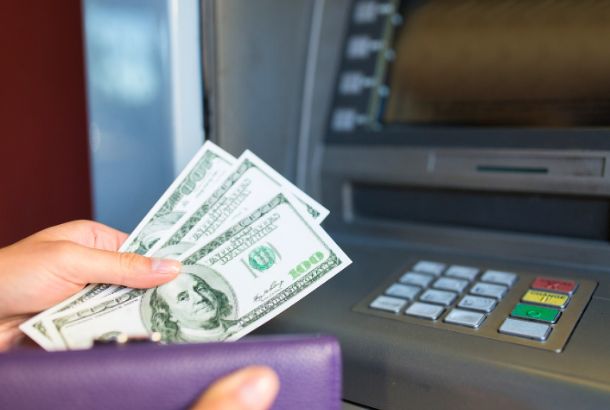Running a small business in today’s economy isn’t easy. From rising costs to seasonal dips in sales, cash flow often becomes the biggest challenge. When payroll is due, inventory is running low, or an unexpected expense pops up, waiting weeks for a bank loan approval simply isn’t realistic.
That’s where a merchant cash advance (MCA) comes in. For some business owners, it’s a lifesaver-fast, flexible, and based on your future sales rather than your credit score. For others, it can feel like a debt trap if not used wisely.
So, is a cash advance smart or risky? The truth lies somewhere in between. Let’s break it down so you can decide whether a cash advance fits your small business needs-and how Great American Payment Systems (GAPS) structures its program differently to protect business owners.
What Is a Merchant Cash Advance?
A merchant cash advance isn’t a loan. Instead, it’s an upfront lump sum of cash provided to your business in exchange for a percentage of your future sales.
Here’s how it works:
- You receive funding quickly (sometimes within 24 – 48 hours).
- Repayment happens automatically through a fixed percentage of your daily credit card/debit card sales or via bank withdrawals.
- Instead of interest rates, MCAs use a factor rate (e.g., 1.3 or 1.4). If you borrow $10,000 at a 1.3 factor rate, you’ll pay back $13,000 total.

This makes MCAs especially attractive to small businesses that don’t have collateral or high credit scores but have consistent revenue streams.
Merchant Cash Advance vs. Traditional Loan
To really understand if it’s smart or risky, let’s compare it to a traditional small business loan.
| Feature | Merchant Cash Advance | Traditional Loan |
|---|---|---|
| Speed of Funding | 24 – 48 hours | Weeks to months |
| Approval Requirements | Based on revenue, not credit score | Requires credit check, collateral, strong financials |
| Repayment | Daily % of sales (flexible with revenue) | Fixed monthly payments |
| Interest/Cost | Factor rate (higher overall cost) | Lower APR but longer commitment |
| Use of Funds | Flexible | May be restricted by lender |
| Risk | High if sales drop | Default risk if payments missed |
Takeaway: MCAs are great for speed and flexibility, but they come at a higher cost. Loans are cheaper long-term, but not always accessible.
When a Cash Advance Is Smart
Like any tool, an MCA is only smart when used in the right situation. It can be an excellent fit when your business needs:
- Seasonal Boosts
Retailers stocking up for the holidays, or ice cream shops preparing for summer, often need quick working capital to purchase inventory. - Time-Sensitive Opportunities
Maybe a supplier is offering bulk discounts for a limited time. Access to fast cash can save money and increase margins. - Short-Term Cash Flow Gaps
Restaurants, salons, and retail shops often have uneven cash flow. An MCA can bridge the gap between payables and receivables. - Marketing & Expansion
Investing in advertising campaigns or expanding into a new location often requires quick funding that traditional loans can’t match.
When a Cash Advance May Be Risky
On the flip side, using an MCA can backfire if:
- Sales Are Declining: Since repayments are tied to revenue, lower sales still mean daily deductions-which can strangle cash flow further.
- It’s Treated Like Long-Term Financing: MCAs are short-term solutions. Using them as ongoing capital can be costly.
- There’s No Clear ROI Plan: If you take an advance without knowing how it will generate profit (e.g., expanding, buying inventory), repayment may become a burden.
- Stacking Advances: Taking multiple MCAs at once is a red flag-it compounds costs and increases repayment strain.

Pro tip: Always map out how the funds will generate revenue before taking on an advance.
Cost Transparency: Understanding Factor Rates and Fees
One reason MCAs have a bad reputation is hidden costs. Some providers advertise “fast cash” but bury the real repayment structure in the fine print.
Here’s an example:
- Advance amount: $20,000
- Factor rate: 1.35
- Total repayment: $27,000
- Daily sales holdback: 12%
If your daily credit card sales average $1,000, $120 will automatically go toward repayment. On strong sales days, you repay faster; on slow days, repayment takes longer.
The key is clarity. You should always know:
- The exact factor rate.
- Total repayment amount.
- Repayment schedule and daily holdback percentage.
- Any additional fees (setup, processing, etc.).
Red Flags to Watch Out For
Unfortunately, not all MCA providers operate fairly. Look out for these warning signs:
- Vague or hidden terms (no clear factor rate listed).
- Aggressive sales reps pushing you to sign immediately.
- Stacking loans-encouraging you to take multiple MCAs.
- Excessive fees beyond the factor rate.
- No support or guidance after funding.
How GAPS Structures Its Cash Advance Program Differently
At Great American Payment Systems, we know small businesses need both speed and security. That’s why our cash advance program is built with transparency and client-first values:
- Clear Terms Upfront: No hidden fees, no surprises-factor rate, repayment structure, and total cost are disclosed before signing.
- Flexible Repayment: Payments align with your daily sales, so you’re never overburdened during slow weeks.
- No Loan Stacking: We prioritize sustainable funding, not debt cycles.
- Funding Strategy Support: Our team helps you map out how to best use the advance for ROI (inventory, marketing, payroll, etc.).
- Fast Access: Approvals within 24 – 48 hours, so you get cash when you need it most.
Our goal isn’t just to provide funding-it’s to help small businesses use it strategically to fuel growth without financial strain.
Real-World Case Study: A Restaurant’s Seasonal Growth
A family-owned restaurant in the Midwest was struggling to keep up with demand during the holiday season. Customers were lining up, but the business didn’t have the cash flow to order bulk ingredients and hire extra staff.
By securing a $15,000 cash advance through GAPS:
- The restaurant stocked up on supplies before holiday rush pricing kicked in.
- Daily repayment averaged 10% of card sales, which scaled with revenue.
- Within 60 days, they saw a 20% increase in net profit compared to the previous year.
The advance wasn’t just survival-it fueled measurable growth.
The Bottom Line: Is It Smart or Risky?
A cash advance isn’t good or bad-it’s about how you use it.
- ✅ Smart: When it bridges short-term gaps, funds profitable opportunities, or supports growth with a clear ROI plan.
- ❌ Risky: When it’s used without a repayment strategy, during declining sales, or stacked repeatedly.
Think of it as a power tool: in the right hands, it builds something stronger. In the wrong hands, it can cause damage.
Final Thoughts:
Small businesses often don’t have the luxury of waiting months for traditional financing. That’s why merchant cash advances exist-to provide speed, flexibility, and access where banks fall short.
But success depends on transparency, planning, and the right partner. With GAPS, you get more than just funding-you get a growth partner who helps you use cash advances strategically, not recklessly.
GET IN TOUCH

https://shorturl.fm/mln9S